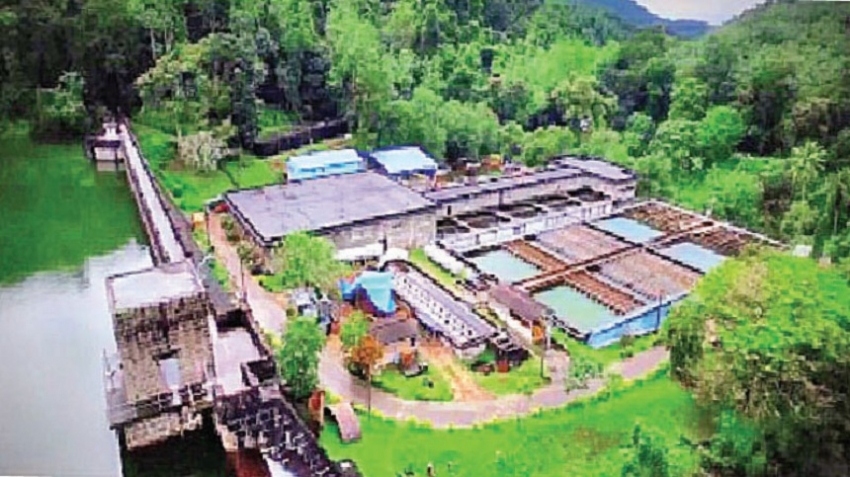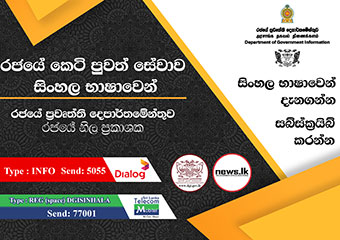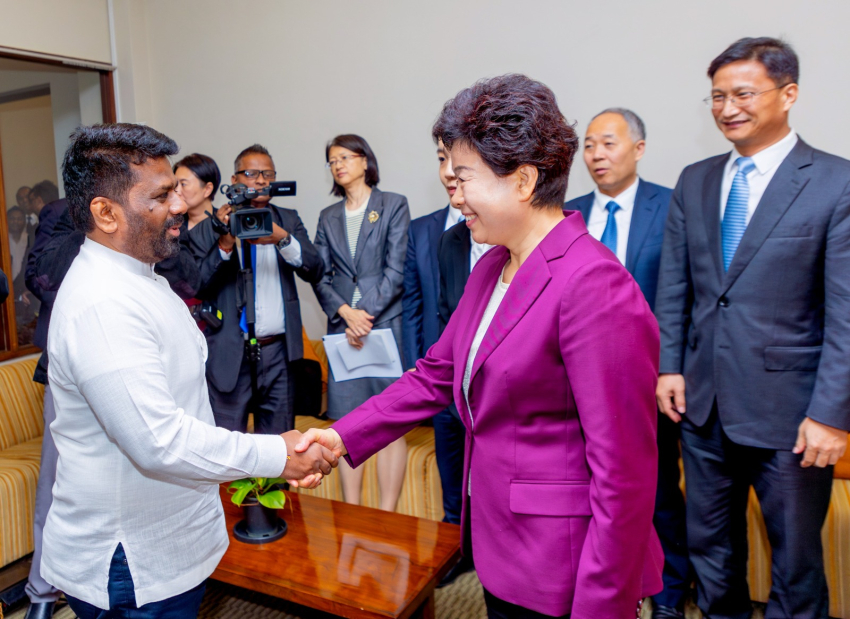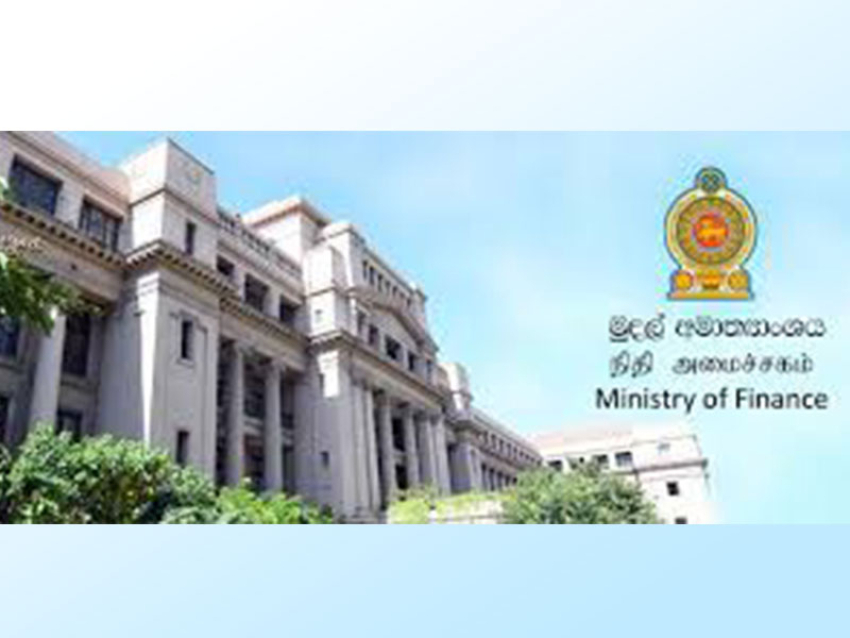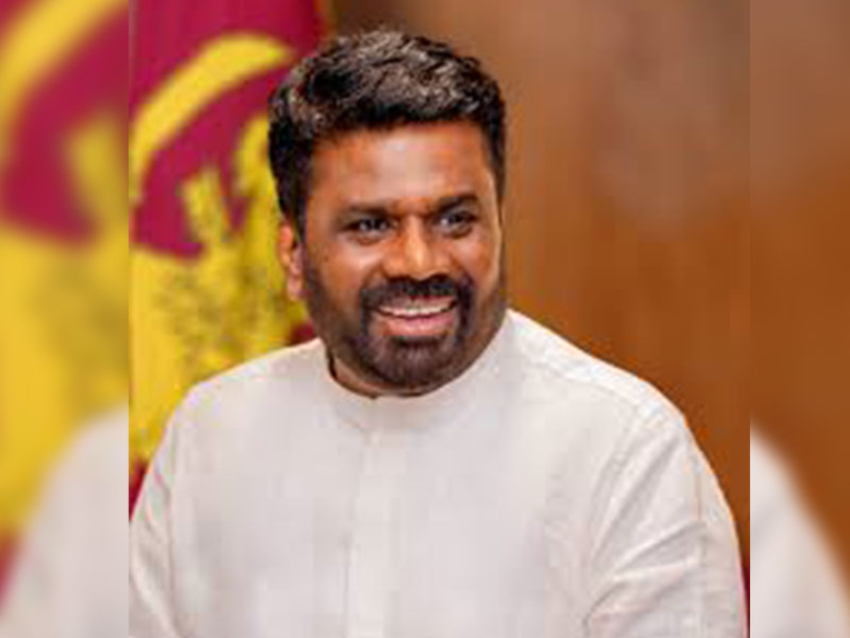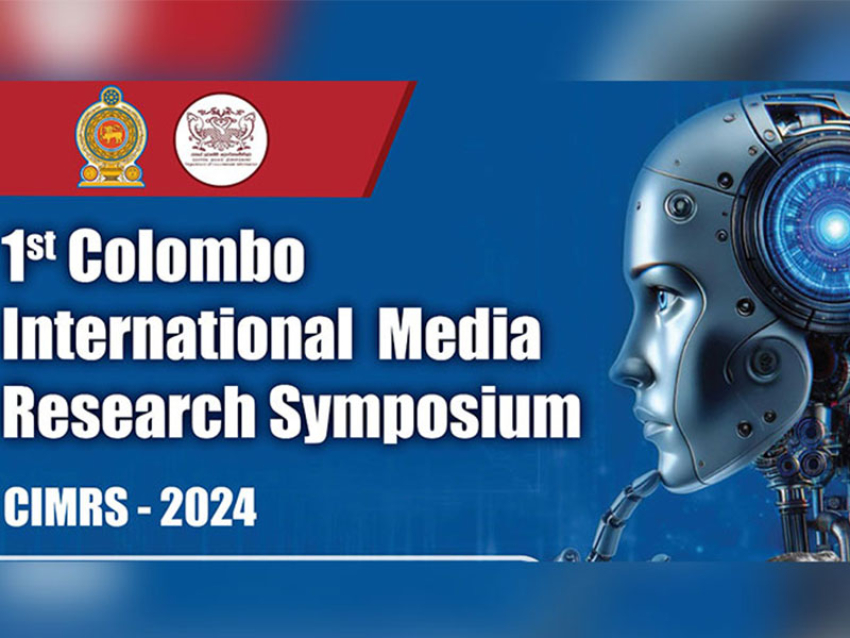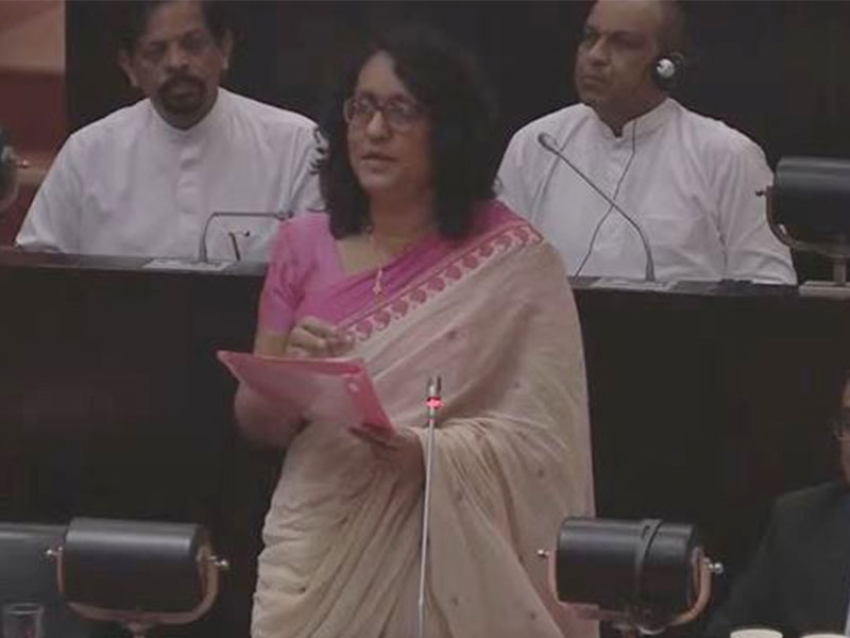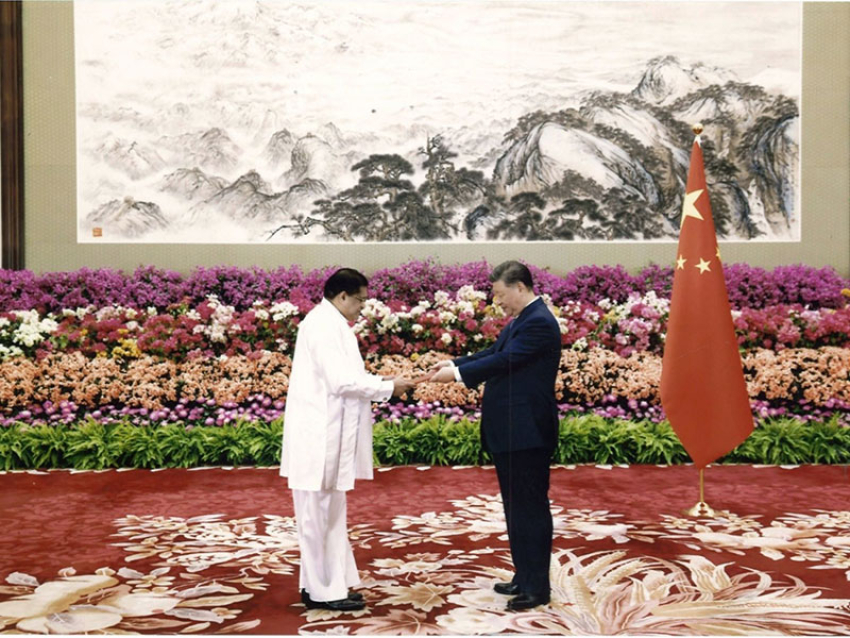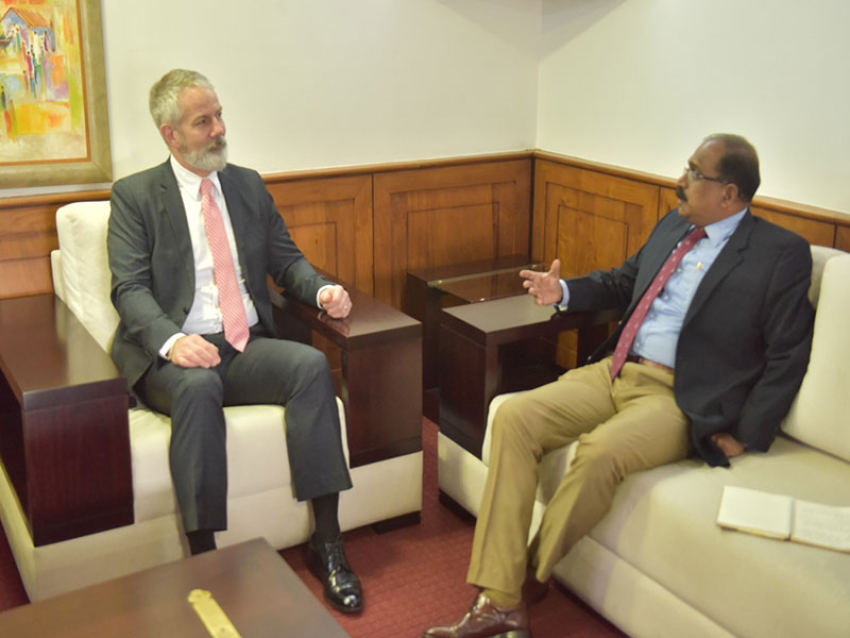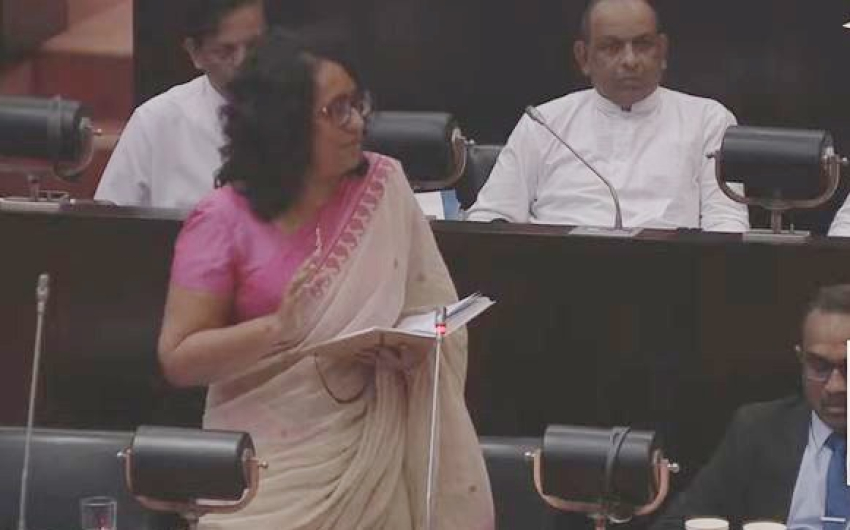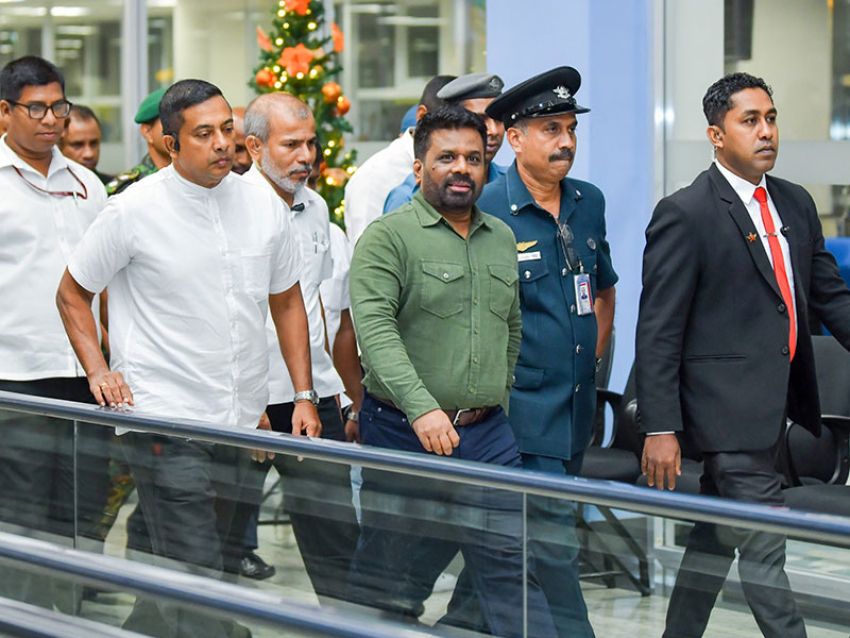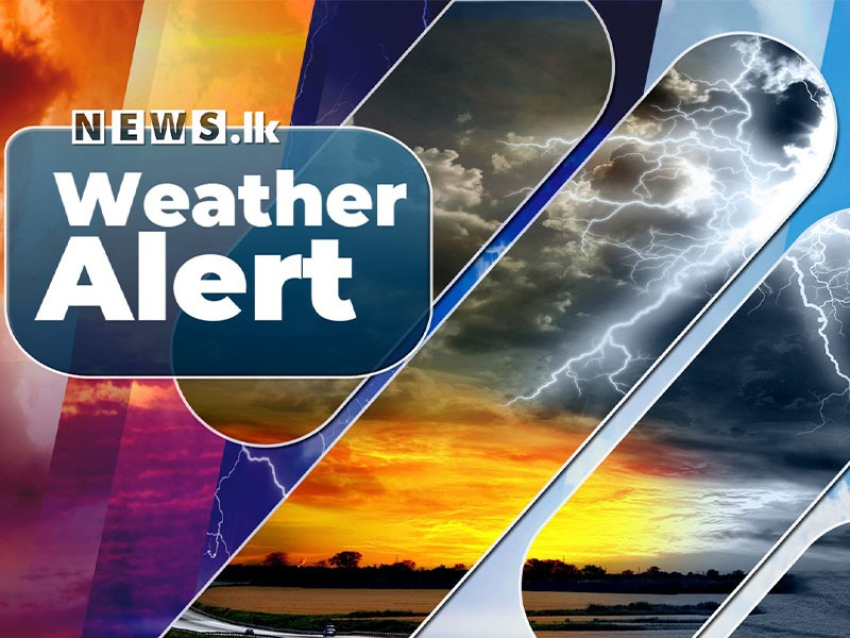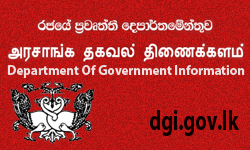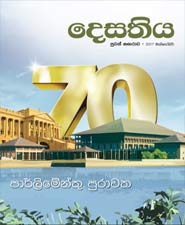The Colombo Water Supply Service Improvement Project was launched by the National Water Supply and Drainage Board (NWSDB) with the assistance of the government and the Asian Development Bank. Under this project, Colombo will get an efficient water supply making the service financially viable, said Colombo Water Supply Project Director Engineer Abdul Razeed at a press briefing at the Water Supply Project office in Wellawatte recently.The Project Director said the project costs Rs. 40 billion and the pipe system in Colombo city is about 960km long, of which approximately 60 percent will be replaced with new pipes.
Currently, there are about 600,000 people living in Colombo city and another 400,000 people travelling daily to Colombo for various purposes. Nearly 140,000 houses have pipe-borne water. However, the current water pipeline network which supplies drinking water to consumers is over 150 years old. It is also not sufficient to cater to current as well as future requirements of the city. People living in certain areas receive water only for six to ten hours a day and the supply is limited in off-peak hours.
Approximately, 3,000,000 cubic metres of treated water is supplied to the city daily, of which, 33 percent is lost due to leakages in the distribution pipe system incurring a considerable loss to the NWSDB. This has posed a serious threat to the entire water supply system. Therefore, immediate and major renovation is required. Former City Planning, Water Supply and Higher Education Minister Rauff Hakeem and the Finance Ministry initiated this project to address the existing challenges through a sustainable and lasting solution.
With the completion of this project, an uninterrupted water supply will be maintained in Colombo with sufficient pressure as the main pipe that carries water to the city would be replaced with a durable pipe with high quality and higher capacity. The Geographic Information System (GIS) technology would provide better solutions for leaks and breaks in the pipe system.
The Project Director requested cooperation from the public as during the short period of maintenance work, they may face inconveniences due to traffic congestions near the project areas, temporary road closures, limited parking facilities, and dust and noises generated by project activities.
Colombo city was one of the few cities in Asia that was fortunate to get piped water supply during the late 1800s. The water supply to Colombo commenced with the construction of the reservoir at Labugama which is 45km away from Colombo, by the Colombo Municipal Council. This reservoir was formed by channelling the water of the Wak Oya, a tributary of the Kelani Ganga.
Presently, the Colombo water supply covers the entire municipal area of Colombo city and receives water from the Ambatale, Labugama and Kalatuwawa Water Treatment Plants through transmission lines to meet the water demand of a population of approximately 750,000, both residing and commuting to Colombo daily for various purposes.
The well-designed distribution network system was built in Colombo over 100 years ago. Since then, there have been many projects implemented to address the ever-increasing water demand, but unfortunately, no significant analysis was done to carry out periodic rehabilitation of the network due to the lack of capital investments. Having the same pipelines for many years created scaling of pipes and leaks in the network, ultimately deteriorating the water supply services to the city.
The pressure reduction system reduces the water carrying capacity of the cast iron (CI) pipes significantly.
The NWSDB was losing approximately 49 percent of treated water supplied to Colombo city (which was approximately 140,000 to147,000 cubic metres a day) without any revenue, through leaks in the pipes, illegal water use, authorised free water usage in tenement gardens and other administrative losses. Further, consumers in some areas in Colombo city receive water only during off-peak hours. The growing population, high commercial demand and accelerated post-war development have greatly increased water requirements of the city. At present, the NWSDB is facing extreme difficulties in satisfying the water demand of the city and its suburbs.
As pipes were laid during different time periods, the detailed the Colombo water supply pipe network drawings are not fully available with the NWSDB causing difficulty in tracing the pipes for repair work and investigations. Further, to overcome the fluctuating or low-pressure issue, some areas of Colombo city are fed from the direct transmission mains which result in energy losses or efficiency reduction of pumps.
Since Colombo is a key economic and administrative hub in the country, the government has taken action to develop and modernise water supply services to match international standards. An effective and efficient water supply system is necessary, not only for the growth, but also to attract foreign investment and sustain other development activities.
Project formulation
In order to address these issues, the Asian Development Bank (ADB) agreed to finance the project upon the request of the government. Both the ADB and the government are investing approximately Rs. 42 billion for the Colombo Water Supply Service Improvement Project which aims to deliver better urban water supply services effectively and efficiently by reducing the present water loss mainly in Colombo city.
Rehabilitation and modernisation of the Colombo water supply system includes
construction of a Water Loss Management Building;
construction of an Area Engineer’s Office for Elie House in Pamankada; and
construction of a state-of-the-art training centre for the NWSDB with a plumbers’ training yard and water metre testing benches.
This ongoing project is expected to complete by 2022.
The project was launched in 2015 by the then City Planning, Water Supply and Higher Education Minister Rauff Hakeem and Power, Energy and Project Development Minister Ravi Karunanayake.
Project components
The project was designed based on the following criteria:
Pipe replacement
Decayed or damaged pipes will be replaced with both HDPE and DI pipes and other accessories such as valves to minimise the leaks in the water supply system to the accepted international standard – water loss level below 18 percent. Approximately 700 kilometres of pipelines are expected to be replaced.
Shifting of consumer metres
Under a system rehabilitation contract, all the consumer metres (service connections) will be taken out of the premises and installed in a convenient location to enable the NWSDB metre reader to take the reading at any time. This will minimise commercial losses when calculating the Water Loss figure, as the shifting of metre location eliminates the estimated billing due to difficulty in reaching houses and inconvenience caused to customers.
Under this project, they also intend to introduce a remote metering technology (water metres with NBIOT technology) which enables the NWSDB to monitor their customers’ water usage pattern and provide them with a better service in terms of water availability and pressure.
Reservoir-based Zoning and District Metered Area (DMA) Establishment
At present, the Colombo operation is running as a single system with 17 inlet points to supply water causing problems in the operation and maintenance of the water supply system.
In order to ease the operation and maintenance of the water supply network, Colombo city operation is divided into four reservoir based zones and 79 subzones (DMA- District Metered Areas) with average service connections of 1,500. The DMAs have been designed in such a way with emergency interconnections enabling continuous water supply even when the particular ground reservoir, supplying water to the particular DMA is under repair or augmentation. Further, the System Input Volume metres (SIVs) will be replaced with modern flow metres that transmit signals about the volume of water supplying to the city, to the Water Loss Management Control Building automatically.
Demand forecast and transmission improvement
During the Western Province Metropolitan Area Water Supply Master Plan Update – 2013 (MPU-2013), it was noted that the capacity of the existing transmission lines are not sufficient to meet the increasing water demand of Colombo city as it is running at its optimum level at present.
In order to improve the water carrying capacity of transmission lines, three separate transmission lines were proposed, of which two lines are being laid from the Ambatale Treatment Plant (1200mm Dia DI Line) and Gothatuwa reservoir (1000mm Dia DI Line) under the French Development Agency (AFD) co-financed project. Procurement works are underway for the third line (Jubilee Transmission Main).
In addition to the improvement of the transmission capacity, the MPU -2013 recommended to reduce the leaks in the Colombo supply system to save water.
Modernising water supply infrastructure
Under this project, a GIS-based asset management system will be established. The pipeline network with valves and the other important accessories’ location information (x, y and z) will be computerised using the Global Information System (GIS). This will enable operation and maintenance team and leak detection teams to easily locate the pipe with minimal time so that leaks and other issues can be handled with minimal disturbance to the public within a short time.
Data collection for GIS update
A dedicated state of the art building for the Water Loss Management office is being established in Maligakanda with a staff with advanced technology and equipment to carry out the water loss monitoring on daily basis and initiate actions to minimise the water loss below the minimum level during operations and maintenance.
Fully equipped active leak control teams will be assembled to support the water loss management team in identifying invisible leaks that cause water losses.
Improving the water supply system
Under this project, a non-governmental organisation has been recruited to carry out social mobilisation programmes to educate people of the importance of water and payment to the water consumption and encourage them to obtain individual connections and reduce water wastage.
Current status of the project
Out of the planned 700km, 400km was repaired with the approved quality testing up to June 30. This has led to the completion of almost nine DMAs while the repair work of 36 other DMAs is in progress.
Further, water loss management studies in the above completed DMAs (eg., DMA-30D and DMA-27A) indicate that water loss has reduced from more than 50 percent to below 10 percent. Initial water loss management studies in other DMAs which are in progress too indicate favourable results in the water loss of the particular DMA.
Water loss reduction is expected to achieve in entire Colombo city during the project period. As expected, the water loss reduction in the completed DMAs and in other ongoing project areas has significantly contributed to reduce the overall Water Loss figure of Colombo city from 46 percent. The same trend is expected to continue in the future too.
At present, approximately 100 rehabilitation teams are working in the four zones. Water losses are encountered through self-made damage by these teams at work. It is estimated that approximately four percent of the present NRW is due to the above mentioned self-made damage by the contractors. In a complex city like Colombo, such water loss is inevitable during the construction period. Leaving all these, up to date the project intervention has enabled the NWSDB to save 5,000 cubic metre water a day (i.e., 5,000,000 litres a day) and supply to customers with more revenue.
Difficulties encountered in implementation
This project is being implemented with the intention of improving the water supply service level to customers while minimising the leaks and losses in the system.
Unlike the other water supply projects, this is quite different and challenging as the NWSDB has to carry out the system rehabilitation work while maintaining the water supply to consumers with minimum interruptions. The supply interruptions are inevitable when replacing the connection of an existing system with a new one.
No pain no gain
Rehabilitation work will improve the pressure in the water supply system supplying uninterrupted water connection throughout the day, while improving the water supply services in the high elevated areas and low-pressure zones in the city.
The NWSDB is conducting various public awareness programmes such as the distribution of notices, newspaper advertisements and radio announcements to inform the public in advance about service interruptions and the roads in which construction work is in progress. This will enable the public to take necessary action to store water for the service interruption period and avoid using those roads during the construction period and reduce traffic congestion.
In most of the places in Colombo city, all the utility lines are laid underground and congested in many places, causing problems in identifying suitable spaces to lay water lines that can be easily accessible for operation and maintenance.
Labour shortage
The construction industry is facing a serious shortage of experienced workers to carry out the tasks in the ground.
In most of the roads, pipes are being laid at night to minimise traffic congestion resulting in low efficiency in the output compared to day time work.
Social impact of the project
Uninterrupted water supply reduces tension and conflicts in households.
Housewives do not have to spend much time in collecting water and can spare more time for other productive activities.
People can schedule their work when water is readily available.
People spend less money on electricity (for water pumping), and other means of obtaining water.

